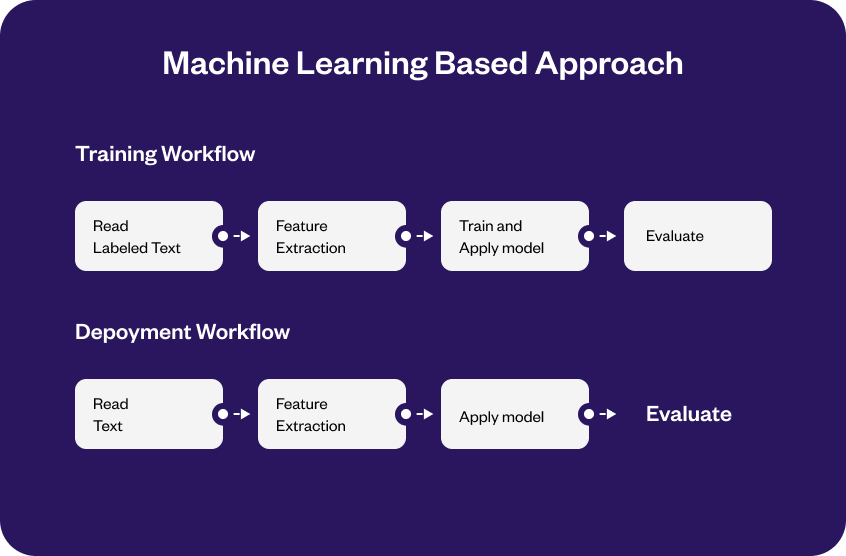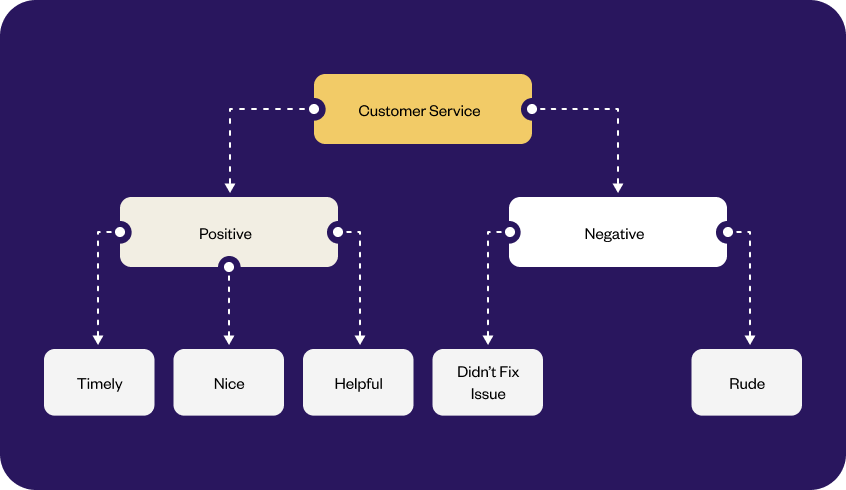Executive summary
At the heart of every successful business lies a deep understanding of customer sentiment. This article unlocks the potential of customer sentiment analysis, a crucial element in the ever-evolving landscape of customer experience. We explore what customer sentiment analysis is, its pivotal role in refining customer interactions, and how it can be a game-changer in boosting business outcomes. Delving into the practical aspects, we’ll discuss how sentiment analysis enhances customer service, elevates marketing ROI, innovates product development, and strengthens brand reputation. Additionally, we address methods to effectively measure and analyze customer sentiments, including the integration of AI chatbots for more nuanced data gathering.
Introduction
Imagine a world where your business can instantly understand what customers feel about your brand, product, or service. That’s the power of customer sentiment analysis—a game-changing tool in the modern business toolkit. It’s not just about tracking likes or dislikes; it’s about decoding the subtle emotional cues that drive customer behavior and loyalty.
The power of customer sentiment analysis is evidenced by its impact on customer behavior. Statistics reveal that customers are likely to spend 140% more after a positive experience and spread their negative experiences to an average of 16 people. Let us uncover the layers of customer sentiment analysis, illustrating how businesses can harness this powerful tool to refine their strategies, enhance customer engagement, and, ultimately, drive business success. With the advent of AI and chatbots, the potential to tap into customer sentiments has reached new heights, making this the perfect time for businesses to integrate these tools into their customer experience arsenal.
What is customer sentiment?
Customer sentiment, at its core, is the collective feelings and attitudes customers hold towards a brand or product. It’s an emotional barometer that gauges how your customers perceive their interactions and experiences with your business. This sentiment can manifest as positive, negative, or neutral reactions and significantly influences customer behavior and decision-making processes.
Understanding customer sentiment is not just about tracking sales figures or website traffic; it’s about delving deeper into the emotional responses that drive customer behavior.
The research underscores the weight of sentiment in customer decisions: about 60% of consumers base their purchase decisions on expected support quality. In comparison, 55% report increased stress levels after negative interactions with brands. These emotional responses can profoundly impact customer loyalty and churn rates, highlighting the need for businesses to engage with and understand their customers’ sentiments actively.
What is customer sentiment analysis?
Customer sentiment analysis is the process of using technology to detect and interpret the emotional tone behind customer feedback. This technique involves analyzing data from various customer interactions, such as online reviews, social media comments, and customer support communications. This analysis goes beyond mere data collection; it’s about extracting meaningful patterns and emotional tones that reveal customer perceptions and expectations.
By leveraging natural language processing (NLP) and machine learning algorithms, sentiment analysis identifies and categorizes opinions expressed in text data to determine whether customer attitudes are positive, negative, or neutral. This analysis helps businesses gain valuable insights into customer opinions, enabling them to tailor their strategies, products, and services to meet customer needs better and improve overall satisfaction.

There are various approaches to sentiment analysis, each offering unique insights. Fine-grained analysis, for instance, assesses the intensity of emotions in customer communications, while emotion detection categorizes specific feelings like joy or anger. Aspect-based analysis dives deeper, examining sentiments related to particular aspects of a product or service. By leveraging these techniques, businesses can gain a nuanced understanding of their customer base, enabling them to tailor their strategies to enhance customer satisfaction and drive growth. This understanding is critical in a market where customer loyalty is increasingly contingent on emotional connections and personalized experiences.
Benefits and use cases of customer sentiment analysis
Customer sentiment analysis is more than just a buzzword in the corporate world; it’s a powerful tool that opens up new vistas for enhancing customer relations and business growth. By understanding the emotional pulse of customers, businesses can strategically steer their operations for maximum impact. Let’s explore some of the key benefits and use cases of customer sentiment analysis:
1. Better customer service
Improving customer service is a direct benefit of customer sentiment analysis. By analyzing feedback, businesses can pinpoint the causes of dissatisfaction and address them proactively.
For instance, sentiment analysis can reveal if customers are consistently unhappy with a particular aspect of service, like long wait times or inadequate responses. Armed with this information, a business can implement targeted improvements, such as optimizing response times or training customer service representatives more effectively.
This approach not only resolves existing issues but also preempts potential future complaints, ensuring that customers feel heard and valued.
2. Increased ROI from marketing campaigns
Sentiment analysis offers a strategic advantage in marketing. By understanding customer reactions to previous campaigns, businesses can fine-tune their messaging and target for better engagement and conversion rates.
For example, a company might find that customers respond more positively to campaigns that highlight product usability rather than just its features. This insight allows the company to adjust its marketing strategy, ensuring that future campaigns resonate more deeply with the target audience, ultimately driving a higher return on investment.
3. Improved products and services
This analysis is invaluable for product development and service enhancement. By tracking customer sentiments, companies can identify popular features and those that may require refinement.
For instance, a tech company might use sentiment analysis to learn that customers love the user interface of their software but find the installation process cumbersome. Such insights enable the company to focus its efforts on improving the installation experience, thus enhancing overall product satisfaction.
4. Better brand reputation management
Managing a brand’s reputation effectively is another critical application of sentiment analysis. By monitoring online platforms like social media, forums, and review sites, companies can gauge public perception of their brand in real-time. This proactive approach allows businesses to address negative sentiment and prevent potential PR crises quickly.
For example, suppose a negative trend is spotted in customer reviews. In that case, a company can immediately investigate the issue, address it publicly, and take corrective actions, thereby demonstrating its commitment to customer satisfaction and maintaining a positive brand image.
How to measure customer sentiment
Measuring customer sentiment is an integral part of understanding and improving the customer experience. It involves various techniques and tools to accurately gauge and interpret the emotions and opinions of customers towards a brand or product. Here’s how businesses can effectively measure customer sentiment:
1. Customer service support tools
Modern customer service support tools like Yellow.ai are equipped with advanced features that employ machine learning to analyze customer interactions and sentiment. These tools can automatically categorize customer feedback based on sentiment, helping businesses quickly identify and address areas of concern. Furthermore, such tools can intelligently route customer queries to the most suitable agents, ensuring that customer needs are met effectively and efficiently.
2. Social media monitoring
Social media is a goldmine for sentiment analysis, as it is where customers freely express their opinions and experiences. Utilizing social media monitoring tools allows businesses to track mentions, hashtags, and direct feedback related to their brand. By analyzing these social interactions, companies can gain insights into public perception and sentiment trends. This monitoring can range from manual observation to using sophisticated tools that aggregate data and provide sentiment analysis.
3. Direct customer feedback
One of the most straightforward methods to gauge customer sentiment is through direct feedback. It includes conducting in-depth surveys, providing comment fields on websites, and measuring customer satisfaction (CSAT) scores. These methods allow customers to explicitly state their feelings and provide valuable insights into their experiences and expectations. Regularly soliciting and analyzing this feedback helps businesses stay in tune with their customer base and make informed decisions.
4. Net promoter score (NPS)
The net promoter score (NPS) is a widely used metric in customer sentiment analysis. It involves asking customers how likely they are to recommend a business to a friend or colleague. This simple question provides a clear indication of customer loyalty and satisfaction. A high NPS score suggests that customers have positive sentiments towards the brand, whereas a low score indicates dissatisfaction and potential issues that need to be addressed.
How to do customer sentiment analysis
Executing customer sentiment analysis involves a blend of technological tools and personal engagement strategies. By systematically implementing these methods, businesses can accurately capture and analyze customer emotions, enabling them to enhance customer experience and drive growth. Let’s dive into the ways to conduct effective customer sentiment analysis:

1. Gather customer feedback through live chat
Live chat provides an immediate platform for gathering customer feedback. Post-interaction surveys or quick feedback forms integrated into live chat can offer valuable insights into customer sentiments. These responses can be analyzed to categorize customers as satisfied, neutral, or dissatisfied, providing a clear picture of customer sentiment.

Analyzing feedback data from live chats helps identify patterns in customer satisfaction or dissatisfaction. This information is crucial for making strategic changes in customer service approaches or product features, enhancing the overall customer experience.
2. Use social media for customer sentiment analysis
Social media platforms are rich sources of customer sentiment data. Monitoring brand mentions, hashtags, and direct messages can reveal how customers perceive a brand. Sentiment analysis tools can process these interactions to understand the prevailing emotions of customers towards the brand.
By analyzing the language and tone used in social media posts, businesses can gauge the intensity of customer emotions. Positive and negative words, emojis, and the context of the conversations provide insights into customer sentiment.
3. Understand customer sentiments using online surveys
Online surveys allow businesses to collect direct feedback from customers at different stages of their journey. This method provides a structured approach to understanding customer sentiments about specific aspects of products or services.

Sentiment analysis of survey responses can identify common themes and emotions expressed by customers. This data is instrumental in making informed decisions to improve customer satisfaction and loyalty.
4. Monitor product reviews and ratings
Product reviews and ratings on e-commerce platforms, Google, and other review sites offer direct insight into customer opinions. Monitoring these reviews can reveal customer sentiments about the product’s features, quality, and overall satisfaction.
Analyzing the sentiment trends in reviews can guide product improvement and marketing strategies. Positive reviews can be highlighted in marketing materials, while negative feedback can inform product development and customer service improvements.
5. Deploy chatbots to collect customer data
AI-powered chatbots can engage customers and collect feedback in real-time. The integration of natural language processing allows these bots to understand and categorize customer emotions during interactions.
The feedback collected through chatbots can be used to train them for better customer interactions. Chatbots can be programmed to recognize emotional cues and respond appropriately, enhancing the customer experience.
6. Conduct in-depth market research
Conducting market research provides a broader understanding of customer sentiments in a specific industry or market. This research can reveal trends, preferences, and emotional triggers that drive customer behavior.
Insights from market research can inform product development, marketing strategies, and customer engagement tactics. Understanding the sentiments of a broader market helps in positioning the brand effectively to attract and retain customers.
7. Connect personally with customers
Engaging customers in one-on-one interactions, whether through interviews, focus groups, or personalized communication, can uncover nuanced sentiments that might not be captured through other methods.
Personal interactions provide in-depth feedback that is rich in emotional context. Analyzing this feedback helps businesses understand the underlying reasons behind customer sentiments, enabling them to make more empathetic and customer-centric decisions.
Customer sentiment and the move toward immersive CX
In customer experience (CX), there’s a growing trend towards creating immersive, personalized experiences. This shift is primarily driven by the evolving expectations of consumers who desire more than just transactional interactions; they seek a connection that feels conversational, personalized, and empathetic. The key to unlocking this immersive CX lies in understanding and integrating customer sentiment into every aspect of the business.
The marketplace of 2023 and beyond is no longer just competitive; it’s saturated with options, making customer experience the primary battleground for differentiation and growth. In this landscape, customer sentiment analysis emerges as a crucial tool. It goes beyond mere data analysis to tap into the emotional responses of customers, providing businesses with the insights needed to tailor experiences that resonate on a deeper level.
Yellow.ai, for instance, can be instrumental in this process, offering AI-driven solutions that seamlessly integrate customer sentiment analysis into various touchpoints, ensuring a more cohesive and responsive CX strategy. By harnessing the power of AI and human support, businesses can create a CX ecosystem where every interaction is informed by a deep understanding of customer emotions, leading to more meaningful and satisfying customer journeys.
How Yellow.ai can help you to create an AI chatbot?
Understanding and responding to customer sentiment is pivotal in today’s business landscape, and Yellow.ai emerges as a dynamic platform to create AI chatbots that cater to this need. The advanced capabilities of Yellow.ai enable businesses to craft chatbots that not only interact but also analyze and respond to customer sentiments in real time. Here are some notable features of Yellow.ai that make it an indispensable tool for businesses:
- Natural Language Processing (NLP): Yellow.ai’s chatbots are equipped with sophisticated NLP, allowing them to comprehend and interpret the nuances of human language, thereby accurately gauging customer sentiments.
- Real-time feedback collection: The platform enables chatbots to solicit instant feedback during interactions, offering immediate insights into customer emotions and experiences.
- Sentiment analysis integration: With built-in sentiment analysis capabilities, the chatbots can classify customer emotions as positive, negative, or neutral, providing valuable data for businesses to act upon.
- Customizable responses: Depending on the detected sentiment, Yellow.ai chatbots can tailor their responses, ensuring an empathetic and contextually relevant interaction.
- Seamless integration with CRM systems: The platform ensures that chatbot interactions are not isolated but integrated with the broader customer relationship management systems for comprehensive sentiment analysis.
Listen and understand your customers better

The final word on customer sentiment analysis
Understanding and responding to these emotional cues called customer sentiments is not just an added advantage but a necessity for business success. Customer sentiment analysis stands as a bridge between customer emotions and business strategies, guiding companies to make informed decisions that resonate with their audience. The integration of AI and chatbots in this process marks a significant step towards more empathetic, responsive, and ultimately successful customer relationships. In essence, the future of business success lies in how well a company understands and reacts to its customer’s sentiments.
Frequently asked questions (FAQs)
What is customer sentiment analysis?
Customer sentiment analysis is the process of using advanced analytical tools and techniques to interpret and understand the emotions and opinions expressed by customers about a brand, product, or service. This analysis involves parsing through various forms of customer feedback, including social media comments, reviews, and direct responses, to gauge the overall sentiment towards a business.
How can sentiment analysis be used to improve customer experience?
Sentiment analysis can be used to enhance customer experience by identifying patterns and trends in customer feedback, allowing businesses to tailor their products, services, and interactions to meet customer needs and expectations better. By understanding customer emotions, companies can address issues proactively, enhance positive experiences, and build stronger customer relationships.
What kind of data can an institution gather from sentiment analysis to improve customer experience?
Institutions can gather data on customer preferences, pain points, satisfaction levels, and emotional responses to various aspects of their service or product. This data can include specific likes and dislikes, the intensity of feelings towards certain features, and the overall sentiment trend over time.
Which customer sentiment metric is the strongest predictor of future purchase behavior?
The Net Promoter Score (NPS) is often considered a strong predictor of future purchase behavior. It measures how likely customers are to recommend a brand to others, reflecting their overall satisfaction and loyalty, which are critical indicators of future purchasing decisions.
Why is it important to measure customer sentiment?
Measuring customer sentiment is crucial as it provides insights into how customers perceive a brand, which directly influences their buying decisions, loyalty, and advocacy. Understanding sentiment helps businesses improve customer experiences, address issues promptly, and build stronger relationships, ultimately impacting the company’s bottom line.





























